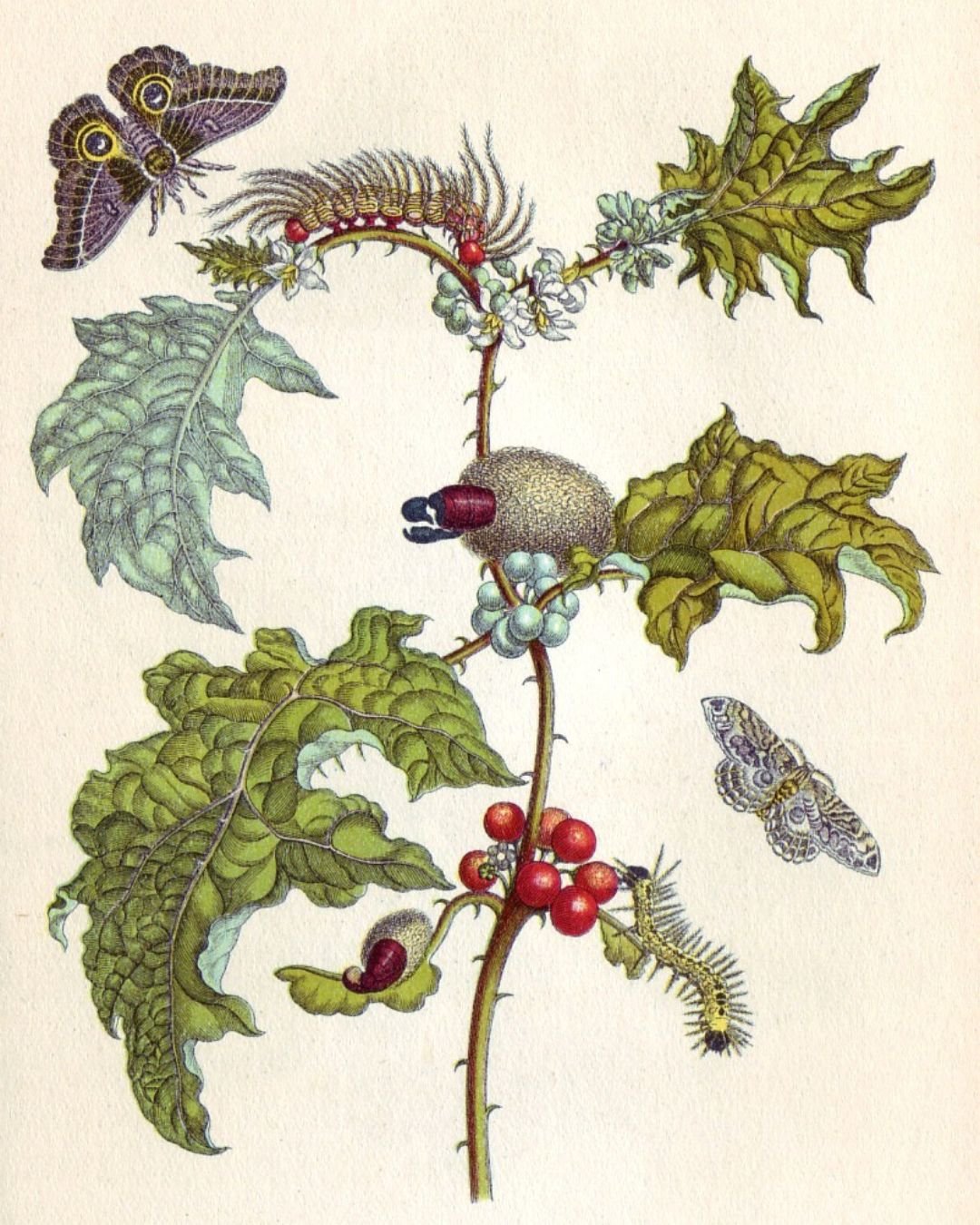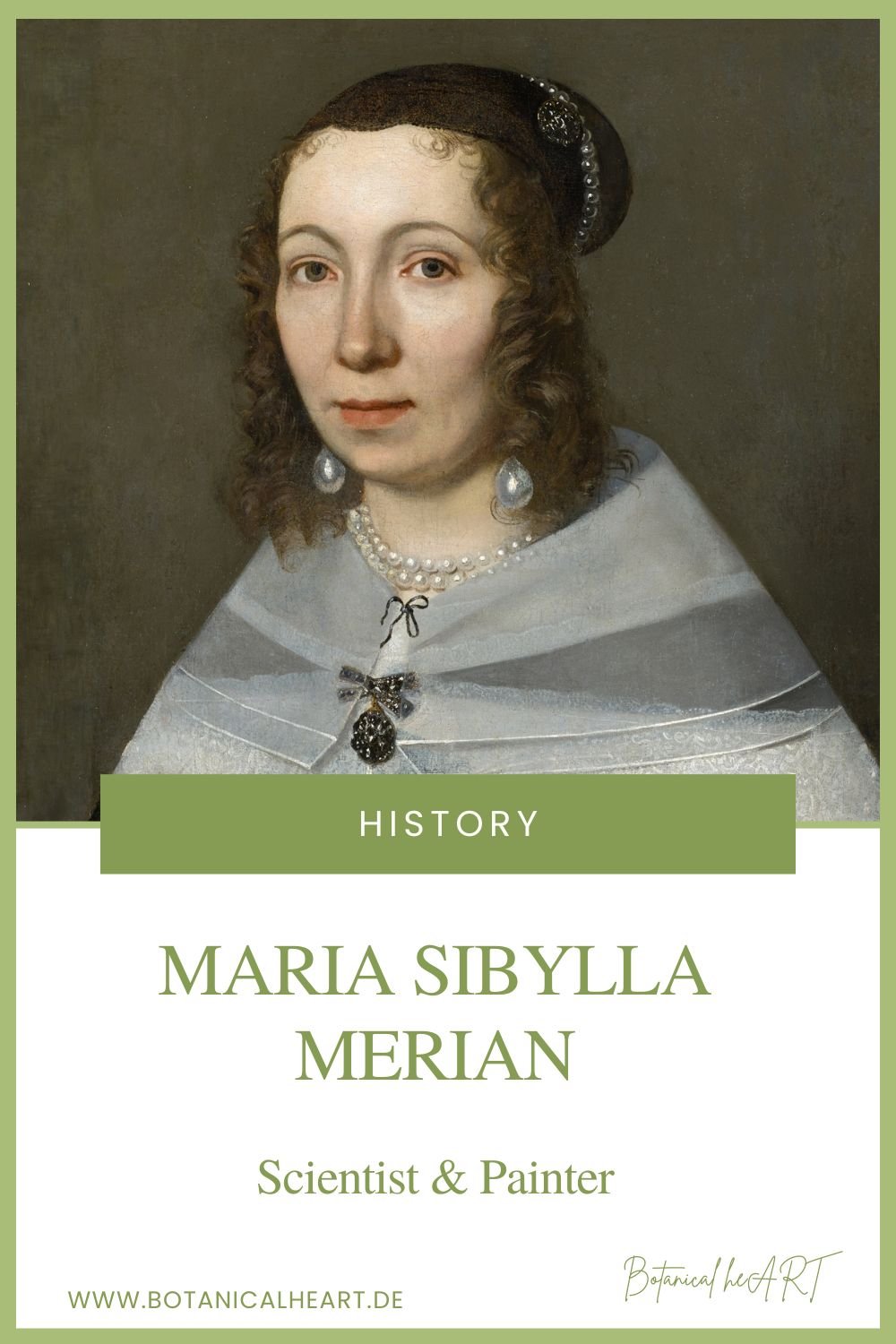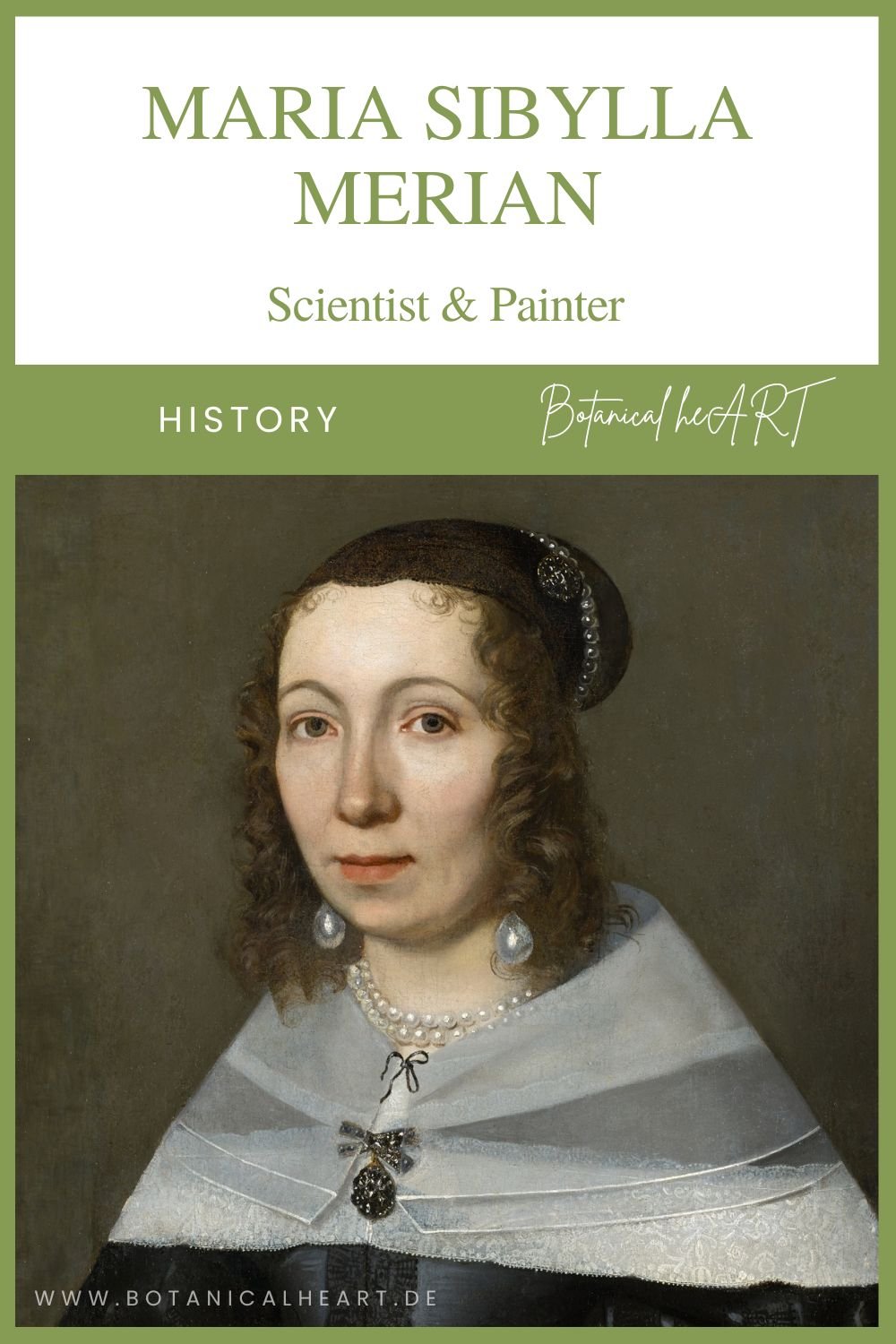Maria Sibylla Merian
I am delighted to present a guest article on the Botanical heART Blog today.
This article, originally published in the newsletter of the German Society for Botanical Art, was written by my fellow artist, Manuela Herhaus.
Manuela takes us on a journey into the fascinating world of Maria Sibylla Merian, a remarkable artist and naturalist of the 17th century, whose contributions to both art and science are nothing short of extraordinary.
Maria Sibylla Merian was not only a master of copper engraving but also a pioneer in the study of insect metamorphosis; her meticulous and artistically exquisite depictions reflect her profound love for flora and fauna.
Let yourself be inspired by the story and works of a woman who was far ahead of her time, blazing trails in both the artistic and scientific communities.
Enjoy reading!
Botanical Artist in Germany
Maria Sibylla Merian
by Manuela Herhaus
In Nuremberg, there is a small garden, high up on the Kaiserburg above the rooftops of the city, between the Heidenturm and the Himmelsstallung. It is called the Merian Garden and serves as a memorial for the famous engraver who spent 14 years of her life in the Franconian metropolis.
But let's start from the beginning: Maria Sibylla Merian was born in Frankfurt in 1647, the youngest child of Matthäus Merian the Elder. He ran an engraving workshop and a publishing house there, a wealthy artist family.
However, her father died when Maria was 3 years old. Her mother remarried another artist: the flower painter Jacob Marell. He ensured the artistic education of the girl, and she learned to draw, paint, and the craft of engraving from an early age.
Maria Sibylla Merian 1647 - 1717
However, Maria Sibylla was primarily interested in insects.
As a teenager, she started a small silkworm culture, feeding them mulberry leaves and making one observation after another.
According to Aristotle, insects - which he understood to include beetles, spiders, worms, etc. - developed through spontaneous generation from inanimate matter, mud, or rotten meat.
Maria saw something completely different: she observed the pupation of the caterpillars and their metamorphosis into what she called "sommervögelein" or butterflies.
It was not until 1667 that the physician Francesco Redi proved the metamorphosis of butterflies, thereby refuting Aristotle.
Flowers & Caterpillars
Maria Sibylla did not publicly refute Aristotle; she observed and drew, having found her calling. In 1670, she moved to Nuremberg with her husband Andreas Graff.
Metamorphosis of the silk moth
Colored Copper Engraving from The New Book of Flowers
During the 14 years there, she had two daughters, taught the daughters of Nuremberg patricians, published a conventional flower book for embroidery templates, and the first two volumes of her life's work:
“Der Raupen wunderbare Verwandelung und sonderbare Blumennahrung”
(engl. “The wonderful transformation of caterpillars and their strange floral food”).
The wonderful transformation of caterpillars and their strange floral food – colored titlecover of the first volume from 1679
These large-format volumes contain her unique "metamorphosis pictures."
These are pictures that show all the developmental stages of the depicted insect, as well as the specific plant they need.
Metamorphosis insectorum Surinamensium, Plate VI, 1705
Maria Sibylla Merian also recognized that different caterpillars needed specific food plants to survive and develop.
All of this is depicted in her pictures, engraved page by page in copper.
In essence, this was already a scientific work, based on precise observation and detailed renderings, accompanied by explanatory texts.
However, it contained no scientific terminology, was written in German, and did not reference the scientific literature of the time.
But never before had anyone depicted the symbiotic relationship between food and insect in such a way.
Journey to Suriname
Through various life stages in Frankfurt, Friesland, and Amsterdam, and by now separated from her husband, the artist and naturalist set out on a journey to Suriname in South America with one of her daughters.
Metamorphosis insectorum Surinamensium, Plate LX, 1705
After a strenuous sea voyage, Dorothea and her mother stayed here for almost two years, collecting impressions, plants, seeds, animals, and anything that seemed interesting.
She utilized the knowledge of the locals and their african and indian slaves to learn as much as possible about this tropical world with its unknown flora and fauna.
However, the climate took a toll on the two Europeans. In 1701, they returned to Amsterdam earlier than planned with drawings, notes, specimens of plants, insects, reptiles, and amphibians.
Here, based on subscriptions, the famous treatise “Metamorphosis insectorum Surinamensium” was created, the first work by a woman to explore the tropical flora and fauna.
This work was bilingual - in Dutch and Latin. It included 60 folio-sized plates with detailed texts and large illustrations.
A plant with the eggs, caterpillars, pupae, and butterflies of a species living on it.
Occasionally, a lizard or a snake for decoration. However, not only her observational skills are admirable, but also the presentation, composition, and color still fascinate after 300 years.
Artist & Naturalist
Thus, Maria Sibylla Merian moved between flora and fauna, between art and science, between insects and their food plants.
Her primary interest was probably insects.
Nonetheless, the depictions of the food plants of her caterpillars are still a delight for every botanical artist, and it is worth noting: all the details were engraved into a copper plate with a burin.
Maria Sibylla Merian died in 1717 at the age of 70.
Lilies in the garden, by Dieter Lölhöffel
In 2013, the Merian Garden was opened on the Nuremberg Kaiserburg, showcasing the plants from the artist's books along with reproductions of the corresponding pictures.
And since she is also considered the founder of modern entomology, an insect hotel for wild bees, beetles, and other arthropods is installed in a niche of the garden wall, in addition to plants that attract insects.
A peaceful place to preserve the memory of the great artist.
I hope you enjoyed this excursion into the history of botanical art!
A heartfelt thank you to Manuela Herhaus and the German Society for Botanical Art for this wonderful guest article about the life and work of Maria Sibylla Merian.
The society´s member newsletter regularly features historical figures from the world of botanical art.
Information about the membership can be found on the society's website:
More about Manuela Herhaus:
Last but not least:
Do you have a suggestions for another guest article?
Feel free to write it in the comments or email me directly at carina@carinairlbacher.de
Do you write articles about botanical art, painting, and/or drawing?
Send me an email so we can talk about YOUR guest article.
Your ideas are always welcome and help me make the Botanical heART Blog even better.
Thank you for reading and see you next time!
Pin this article on Pinterest!
Sources
Maria Sibylla Merian und die Tradition des Blumenbildes Städel Museum 2017
Maria Sibylla Merian, Künstlerin und Naturforscherin 1647-1717, Historisches
Museum Frankfurt a. M. 1997
Dieter Kühn, Frau Merian!, Ffm. 2002
Barbara Beuys, Maria Sibylla Merian, Berlin 2016










